RSR ORCA Digital Tachometer
RSR ORCA Digital Tachometer

In the Middle of a Hurricane
Pedal to the metal! We shift when the po-po tells us to...and we don’t need a damn tachometer! We’re too busy banging shifts, watching the other guy and watching the track to keep our eyes on a damn tach needle! Maybe this is what you think about tachometers and you are probably, for the most part, right.
However, you most certainly had the wrong tachometer, or maybe you needed something different to help you deal with your sensory overload, your need to win, stay alive, or just come back with some useful information.
Sensory Overload
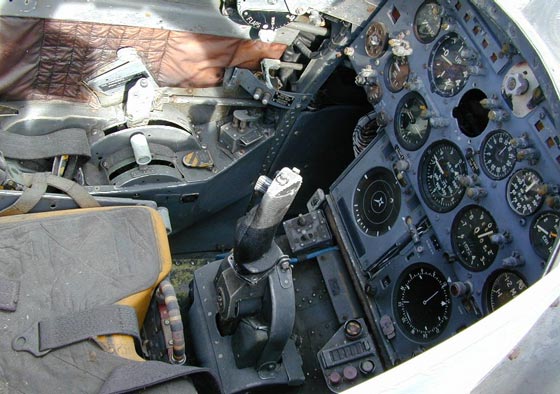
It’s often a question of having too many things to look at instead of watching the road or the track...Sort of like being a fighter pilot with about two dozen instruments to monitor and alarms going off at the same time while the whole world is trying to kill you and you are focused on your target. Aircraft instruments often were oriented so 12 o’clock was normal. A quick glance and you would spot any needle that wasn’t pointing straight up.
In your typical stock car it’s the same. You see gauges rotated all sorts of ways so the 12 o'clock postion or "peak" is normal. The aim is to simplify things for the driver. We have to drive, not watch TV. Quick visual clues are important in battle or in racing.
Rudolph The Red Nosed Shift Light
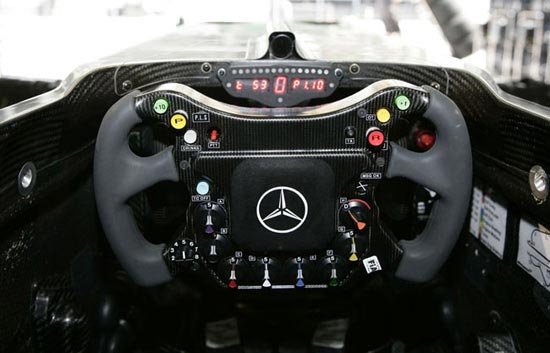
High end motorsports like Formula 1, World Rally, and sports cars cars take things a step further. Watch in-car cameras and you’ll see a series of blinking lights telling the driver when to shift . With snarling 19,000 rpm V8 engines or turbo rallye motors, concrete barriers and trees flying by, cars going airborne, massive g-forces and competitors locking wheels with you, you can’t watch a slow acting needle and some silk-screened numbers, or even a fancy lcd dash.
Shift lights tell you when to shift under race conditions...beyond this they are a bit useless. They don’t tell you your exact rpm and they aren’t much good even for a visual glance of your approximate rpm. Having lights flashing on and off gets your attention and it also gets annoying.
The "Tach" in this McLaren F1 car is simply that tiny row of 15 l.e.d.'s above the steering wheel.
Analog Tachometers
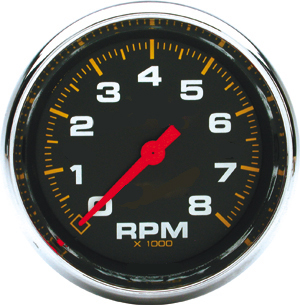
Analog tachs are really wonderful instruments but they all give visual approximations and they lag with the needle "behind" the event. It is difficult to judge shift points when the needle is behind the engine and when you have to visually interpolate the rpms. In the violent, vibrating, shaking world of motorcycles you often see the needle as blur or find it broken loose at the bottom of the window.
Analog tachs with their mechanical movements and moisture sensitive innards were not meant to be sitting outside a passenger compartment.
With our RSR Closed Loop Fuel Injection we need to know specific rpm locations for tuning. With a needle style tach you have to guess what the exact rpm is. You have to look, do a mental interpolation, and make a guess...all of which takes time, time when you are not watching other things, like the road. Take a look at the above tach and start counting the divisions and think if you can figure out an exact reading while you are bouncing around on the track or highway
In tuning or racing it’s not a good idea to be guessing. Correlating load and RPM and constructing fuel map matrices is not an approximate process.
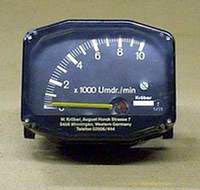
Back in 1977 we ran Kroeber Tachs on our Bol D'Or bikes. Even with their rubber mounts the needles fell off. So much for 1977 state of the art.
Digital Tachometers
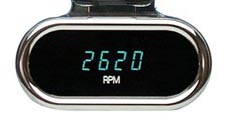
Typical "custon" digital tachometers do next to nothing except take your money and give you something to polish. They are hard to read....because that's what you have to do, you must "read" the digits. There are no shift lights, no 12 o'clock redlines. They are usually part of a display where you have to take your eyes off the road to read them. Not exactly something for a high horsepower application. It is nice to polish however.
Situations Define the Problem
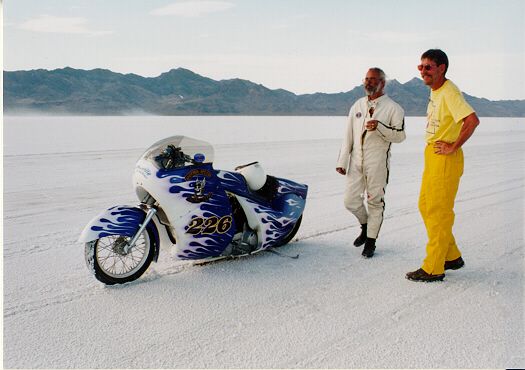
When we started building really high horsepower ORCA turbo engines we had trouble watching a tach, the boost gauge, our RSR Air Fuel Ratio Gauge, egt gauges, the road, cars or the racetrack. We often would overshoot our redline with a slow-acting air core or stepper motor tach with a mechanical needle. More often than not the tachs would vibrate themselves to death.
The rider did everything by feel but without some recording capability we might know the bike hit 25 psi but the peak rpm on the run might remain a mystery. RPM, boost, air fuel ratio, egts, voltages...it's a lot to remember without recording things.
Customers would bring us bikes with big face 5" automotive tachs that had needles in a permanent vibration blur...patently useless. They also blocked your view when you tried to crawl under the paint.
Define the Problem
Shift lights alone won’t give you all the answers. Mechanical needles are slow and unreliable. Exact rpm values have to be displayed. Peripheral vision, not direct visual orientation must provide answers as one has to keep his eyes on the road. Colors provide targets and need not be "read". Normal rpm shift points as well as peak rpm shift points must be clear and exact. Memory or recall of peak values can be useful as riders can’t remember what happened 5 minutes ago.
RSR ORCA Digital Tachometer....The Solution

The ORCA Tach is a solid state, microprocessor-based tachometer that addresses the human interface issues that other tachometers and shift lights fall short in.
1. A super bright four digit l.e.d. display that covers 0 to 9999 rpm. Two brightness levels. Visible in direct sunlight. No lag. Displays in 50 rpm steps. Gives exact rpm information. You can read the numbers under hard acceleration and the digits are bright yellow.
2. A 16 l.e.d. display with four colors that acts as a shift light and as a bargraph display. No flashing "shift" lights to distract you or become annoying.
Clockwise: Two yellow , five green, five orange, and four red super bright l.e.d.’s. The sixteen lights trip at 500 rpm increments with a full scale of 8000 rpm. The peak shift point, the first red light is 6500 rpm, at the exact 12 o’clock position. The yellow lights stay illuminated in the idle range which is below 1500 rpm. The green lights are the normal operating range. The first orange light trips at 4000 rpm which is a normal street shift point.
3. Three buttons: High or peak rpm recall from memory (blue button). Brightness control (white button). Reset button: clears peak value from memory (red button). Large square 12mm buttons work even with gloves.
4. Waterproof 3” diameter billet construction in hard anodized grey finish.
5. Automotive grade high temperature wiring with fiberglass covered abraision proof sheathing.
6. Center band mount. Gauge can pivot up and down as well as side to side. Stainless steel hardware.
7.
Can be ordered for 1, 2, or 4 signals per revolution. Harleys are
1/rev. Aftermarket ignitions (MSD, DYNA etc) have a tach output of
1/rev. A 4 cylinder distributor would be 2/rev and a V8 distributor
would be 4/rev. Triggered by a square wave output signal 5-12V.
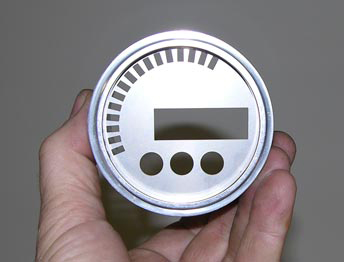
8. We tested round buttons and square buttons and settled on the larger square buttons.
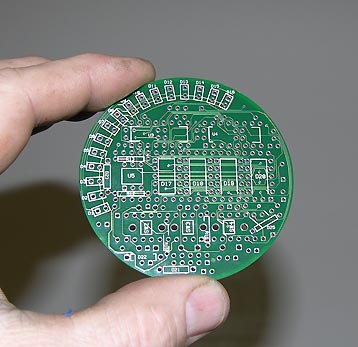
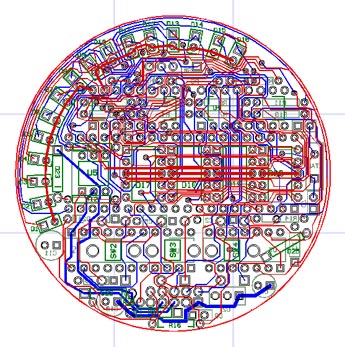
9. State of the art four layer circuit board with military grade componets. Ultra-reliable close tolerance though-hole components. Reverse polarity protected with optically-isolated triggering circuit. Over-voltage and surge protection. Fully encapsulated electronics. The RSR ORCA Tach can be ordered for 1,2, or 4 signals per revolution triggering.
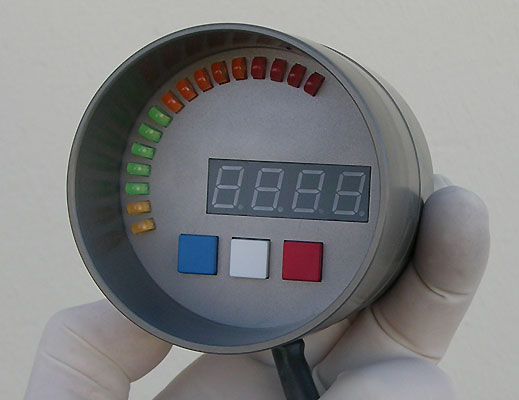
10. Billet enclosure with a laser cut stainless steel face plate, etched and coated for increased brightness. Back of tach serves as a heat sink for the electronic components. Billet enclosure is center back mount via a 5/16" x 18 stainless socket head cap screw.
RSR ORCA Tach...Designed By Racers
We have over 30 years of involvement on two wheeled racing, everything from 24 Hour Endurance, to road racing, to drag racing, as well as our well-known Bonneville speed efforts. There wasn’t a tach that suited our purposes so we made one. It’s more of a question of building what we need to do our job. For others its simply building some useless custom billet part for an equally useless custom bike or someone selling you a car tach adapted for motorcyles.
Steve Manley..Racer / EE
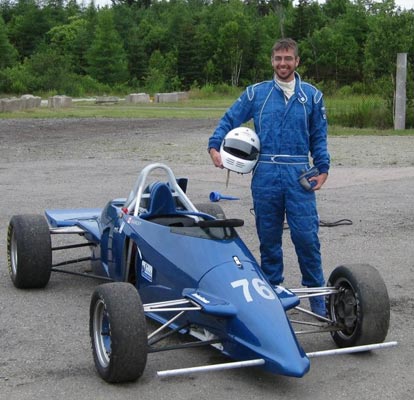

While we know what we want, we also know when to get help in electronics and embedded system design. Steve Manley, the principal of xdesignlabs, has spent way too much time fooling with digital tachometers and race car engineering issues, in-between flying around serving his growing base of racing and industrial clients... So we mixed our special requirements with his expertise and came up with the Orca Tachometer. We did the final circuit layout work, machining and mechanical design and Steve provided the circuitry and embedded code.
It takes a racer to understand racing. We race on two wheels and he races on four. The requirements are different but the ideas are the same.
In Canada all open wheeled race cars are required to have snow plows. Steve did a complete ground-up rebuild of this Reynard. You can view the process on his website.
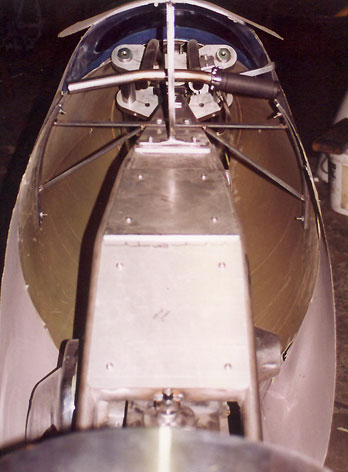
RSR ORCA Tach...The useful tachometer...It’s digital, it’s analog, it’s a multi-color shift light, its got memory, it’s lightning fast, solid state, vibration proof and waterproof. It is simply the best instrument you can buy for one reason...That was our purpose and design intent based on more than 30 years of dealing with every tach dating from ancient mechanical o.e.m. units, Krober electronic ones, large analog Auto Meter ones, up through stock Harley-Davidson tachometers and useless aftermarket lcd and vacuum fluoresent displays.
Forget the tach...get the horsepower first. Then get the tach...the right one! Pictured above is Mike Geokan's Bonneville Bullett. We've developed a comprehensive instrumentation package for Mike's 2007 effort.
Continued Prototype Testing

We tested all sorts of combinations of l.e.d.'s.including blue, orange, red, green, yellow. Certain colors imply things. You have to run the tach in the real world to see how you integrate with it as a system. If there are any hestitations or distractions it's time to try another scenario.

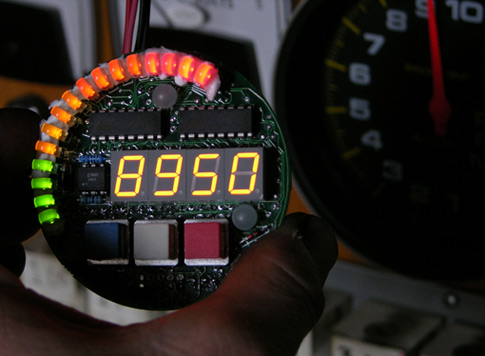
Testing on bikes has resulted in finalized size, color sequences, and brightness levels. It has proven to be the best tach we have ever used. Way, way, better that anything else. The above picture shows two prototypes ( not final configuration) being tested on a BMW motorcycle and on a test bench.
Testing at Bonneville
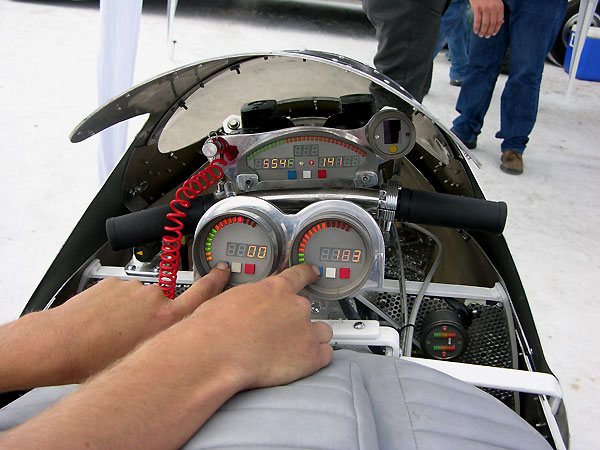
Flickering seven segment L.E.D.s don't always register in a digital camera. Here the memory function (blue button) in the tachometer, to the left, was showing the rider hit a peak rpm of 6800 rpm somewhere on the course. The GPS Speedo, to the right, is showing a peak speed of 183 mph (3rd gear) during a test run.
FXR Test Vehicle
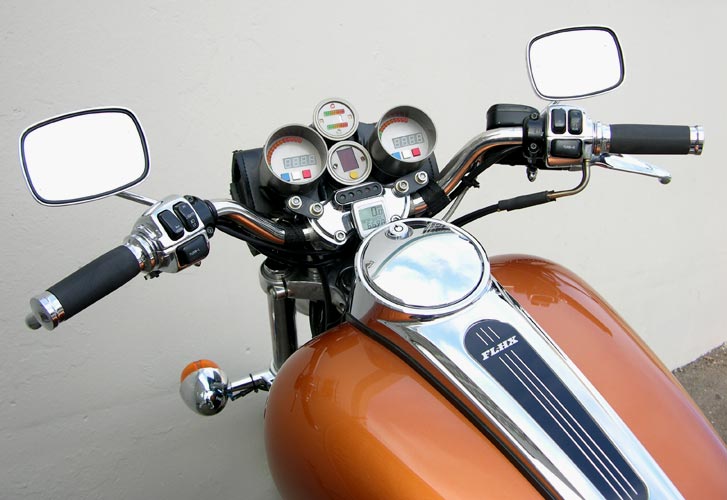
We like FXRs and we instrumented ours with our digital Tachometer, GPS Speedometer, Dual O2 Gauge and Gear Indicator. No it's not a FLHX. It started out as a 1999 FXR CVO2 that we put on a 5 gallon FL tank and got rid of the solid rear wheel and the 21" front wheel. We also converted it to chain drive and put on a Hayabusa steering damper and one ot our LSR 2-1 1 3/4" B Style turn out exhausts. We also fuel injected it with one of our closed-loop RSR Injection Systems.
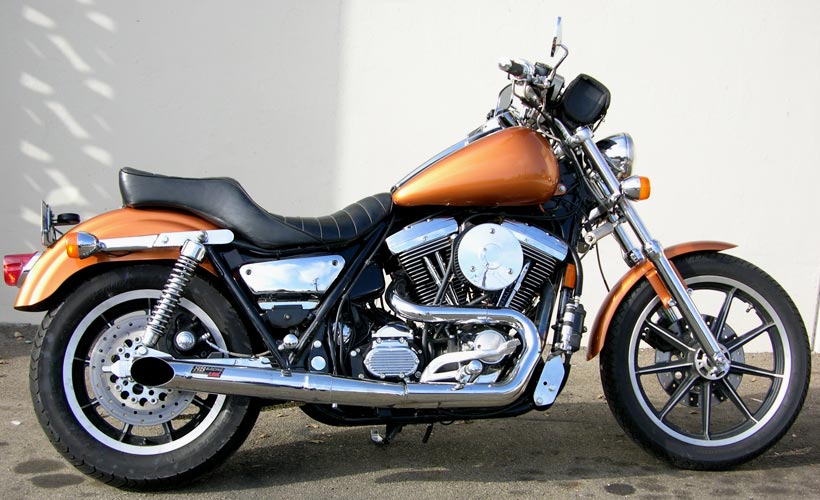
We
had Jim's Cycle painting put on a simple one color scheme as the cops
seemed to be attracted to our blue tank, yellow rear fender and purple
front fender. Clown bike. Painters are weird. We just left the color up
to Jim. He painted Seven time F1 Champion Michael Schumacher's Bobber
Harley. Jim died in 2012 of a heart attack.
Final Version

We tested all sorts of combinations of lights, silkscreens and color schemes and this is the final product. It is a hard anodized billet enclosure with a laser cut stainless steel faceplate that has been optimized for brightness and has a textured and coated surface to prevent unwanted reflections.
It is the world's best tachometer that functions as a shift light and provides no-lag readings of rpm in 50 rpm increments. Easily visible under hard acceleration.
0-9999 rpm bright yellow digits with 50 rpm increments . Sixteen L.E.D. colored lights. 500 rpm per step. Full scale on the 16 l.e.d.s is 8000 rpm.
Two yellow lights for idle below 1500 rpm. Five green lights for normal operating range i.e. below 4000 rpm. Five orange lights, the first of which indicates a 4000 rpm shift point. The last orange light indicates 6000 rpm. Four red, the first of which is at the twelve o'clock position indicating a redline shift point of 6500 rpm.
Blue button is high recall for both sweep and digit scales. White button is brightness select for daylight or nightime. Red button is reset, or zeroing, of the high memory recall. Buttons are high force and are easily operated with gloves.
|
05-0000
|
ORCA Billet 9999 rpm Digital Tachometer (specify 1, 2 or 4 signals per revolution)
|
Hard anodized grey
|
$395.00
|
We have been racing one thing or another from road racing, to drag racing, to Bonneville for over 30 years. This is the tach we had to design. It's simply the best tachometer we have ever used.